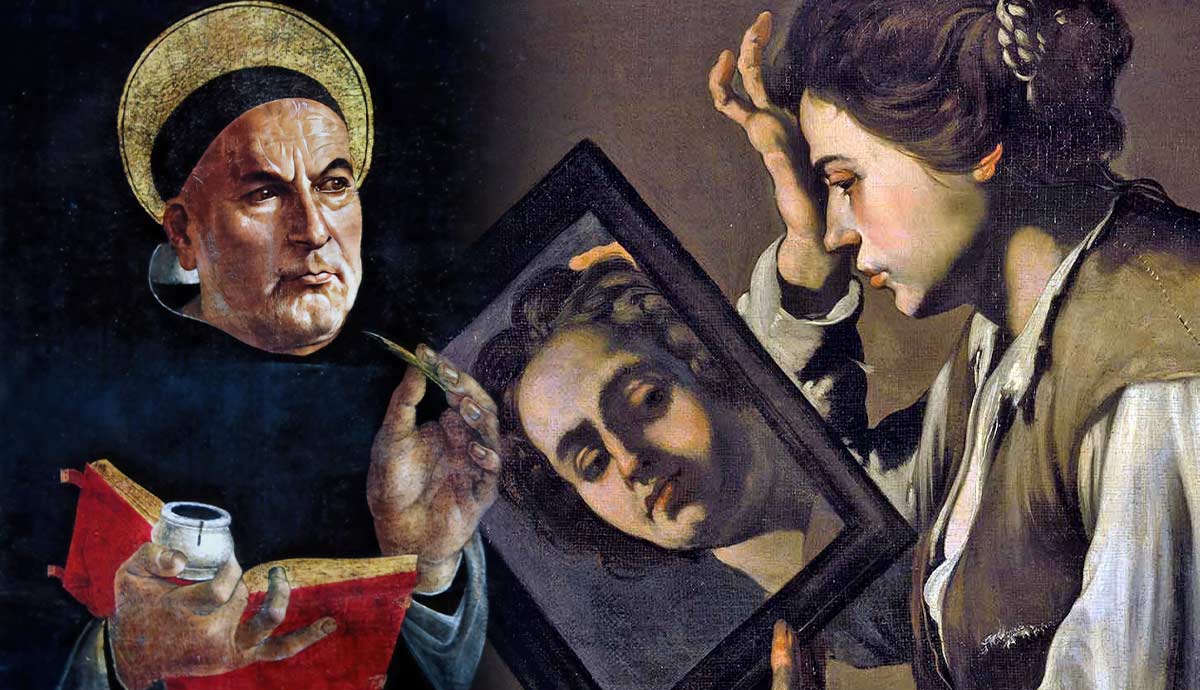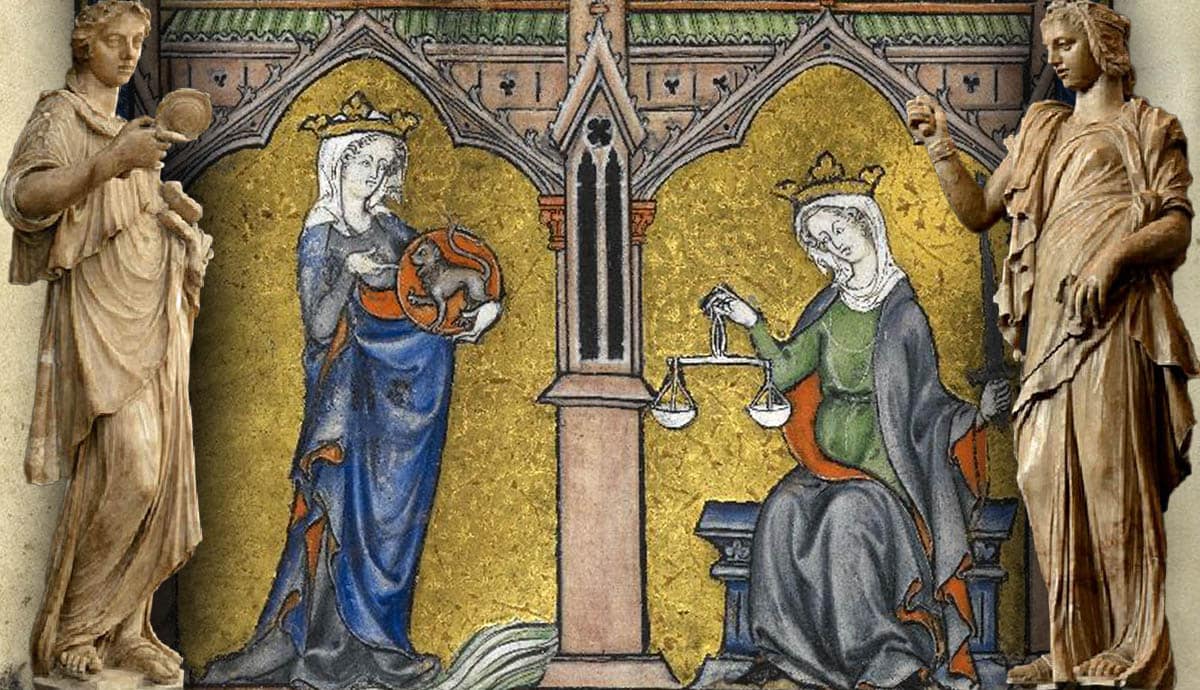
What are the faculties of the mind, and how do they function? This article focuses on the answers given by St Thomas Aquinas to these very questions. It begins with a brief biographical sketch, followed immediately by a discussion of Aquinas’ thought. In the latter section, his theory of perception and the various kind of perceptions that he identifies will be explained. Next, the composition of “thought” in Aquinas is developed, before Aquinas’ conception of knowledge and its relation to his conception of science is discussed.
Who Was Thomas Aquinas?

Thomas Aquinas was born near Rome in Italy, around 1225. He was born into an aristocratic family, and it was decided that Thomas would follow his uncle and become an abbot, as was conventional at the time. Less conventionally, indeed in a decidedly modern fashion, Thomas was educated at the University of Naples and studied a wide range of subjects, including the thought of Aristotle, Ibn Rushd, and Maimonides, all of whom proved major influences on Thomas’ mature thought.
Contrary to his parents’ wishes, Thomas decided that he wished to become a Dominican friar, and as he attempted to do so was held captive by his family for over a year. Eventually, in spite of their best efforts, the family supposedly encouraged Thomas to flee rather to avoid public scorn.
Thomas spent time studying at the University of Paris, in Rome, in Naples, and in various other places. He served as an academic at the former institution and was the official papal theologian. Although his reputation suffered immediately after his death, he was soon recognized as one of the most significant Christian theologians, especially among Roman Catholics. Dante pictures him in the “Heaven of the Sun,” along with other great Christian intellectuals and lovers of religious wisdom.
Thomas Aquinas’ Overall Project

Thomas wrote and taught on a wide variety of topics throughout his life, but there are nonetheless some general features of his thought which are worth summarizing here. It is worth stressing that Aquinas, though he is often called a philosopher and his work is of evident interest to philosophers, he never referred to himself as such. Aquinas remained critical of any attempt to make sense of things that proceeded from any starting point other than Christian revelation.
In spite of this, Aquinas cannot be separated from the philosophical tradition which preceded him, nor can he be considered simply in light of theological or religious forebears. Undoubtedly, the greatest non-Christian influence on Aquinas came from Aristotle, and (as noted above) both Ibn Rushd (a Muslim) and Maimonides (a Jew) proved significant influences over him as well.
But what did Aquinas actually think? In the broadest possible terms, Aquinas conceived of theology as a science, or at least as science-like, in the following sense: the raw material for understanding the world has been given to us in revelation, and what is required now is the application of reason to make sense of that material. Using reason to give us a more profound understanding of the world and, therefore, of the true nature of God and creation is one frame by which we can understand Aquinas’ work as a whole.
1. What Kinds of Perception Are There?

We can begin by looking at Aquinas’ theory of sense perception. Within his theory of perception, Aquinas attempts to make sense of the “five senses”—touch, taste, sight, hearing, and smell—in a distinctly Aristotelian fashion. That is, he attempts to make sense of perception in terms of the things which bring about a certain effect on our organs of perception, in order to explain why we have a certain kind of perceptual experience.
These so-called “proper sensibles,” as one would expect, correspond to each of those five senses. They are: hot-cold, flavor, color, sound, and odor. Yet evidently, these do not offer a full enough picture of sensory perception by themselves, and so Aquinas combines them with what he calls the “common sensibles” – size, shape, number, motion, and rest. These are common because, unlike the proper sensibles, they can be perceived by way of multiple senses – they are “common” to multiple faculties of sense perception.
There is a third category into which Aquinas groups the objects of sense, and those are the “accidental sensibles,” which are concerned exclusively with our observation that something is alive. Given the significance of the category of life for Aristotle, and the relation it has to perception (movement is the basic standard for something being alive, but perception is the sign of animal life and is the “animal” component of the soul), it makes a certain kind of sense to separate out this perception as a singular faculty.

In a move that is entirely characteristic of Aristotle and those inspired by his work, Aquinas does not limit his account of sense perception to the external senses but emphasizes the inner senses as a separate category of sense perception.
There are four such senses in Aquinas’ account: common sense, imagination, our power of estimation, and memory. Common sense is what allows us to combine sense perceptions into holistic, aggregative judgments about objects. The imagination retains images, which is incidentally an element of great importance in later empiricist philosophies, such as that of David Hume. Our powers of estimation perceive intentions or (more generally speaking) implications directly tied to certain sensible qualities. Memory is understood much the same way as it usually is, i.e., it preserves all of the other elements of thought. That isn’t to say that memory is simple to define in the fullest sense, but there isn’t a great deal of controversy in Aquinas’ general attempt to define it.
2. How Do We Account For the Complexity of Cognition?

It is a characteristic problem in the philosophy of mind, in epistemology (the philosophical study of knowledge), and in many other disciplines that, on the one hand, the experiences we have of the world do not seem sufficient to explain all of cognition, all that we think or are able to think. At the same time, describing cognition in terms of some internal, indelible faculty does not sufficiently account for variety in thought.
The conception of thought which Aquinas develops from Aristotle can be seen as pre-empting many of these difficulties, or at least as responsive to them. Aristotle conceives of the intellect in terms of the possible intellect and the agent intellect. The possible intellect is, as the name suggests, not actualized—it is blank, ready to be filled in with productive experiences. The agent intellect, in contrast, is what allows us to go “beyond” our perceptual experiences, and to make sense of more abstract things, to draw connections that are not simply given in experience. This is how we develop cognition that is richer and more sophisticated than a model based on a blank slate being gradually filled in with experiences tends to suggest.

Aquinas adds to this a three-part analysis of the different stages of intellectual operation. There is the part of the intellect involved in concept formation. Then, there is the part that facilitates judgment built from and ranging over said concepts. And finally, there is the part that allows us to move between judgments, to make judgments about sets of judgments, and so on. Again, the emphasis here can be placed on the question of how an empiricist conception of the mind – one which emphasizes that the basic data of thought is in experience – can nonetheless explain the complexity of thought.
3. What is Real Knowledge?

What does it mean to know something, to grasp it fully? Aquinas is very interested in the idea that to know something, is to have mastered the “scientia” (meaning, in quite a loose sense, science) of that thing.
What is it, then, to have a scientia? Aquinas offers a variety of definitions. First, that to have a scientia about a thing is to understand it “perfectly.” Second, that to have a scientia is to know the cause of the thing which is the object of knowledge. Third, that to have a scientia is to know with certainty. Fourth, that scientia can articulate the inevitability of our understanding – the object of our understanding “cannot stand otherwise” (and, implicitly, it does indeed stand). Lastly, Aquinas relates it to logical inevitability, and in turn holds that to show scientia is the consequence of logical inevitability is equally to show that scientia has gotten at the “universal nature of things.” This is an extensive, complicated picture of knowledge, built to match the endless qualifications to which Aquinas subjects the concept of mind to.










